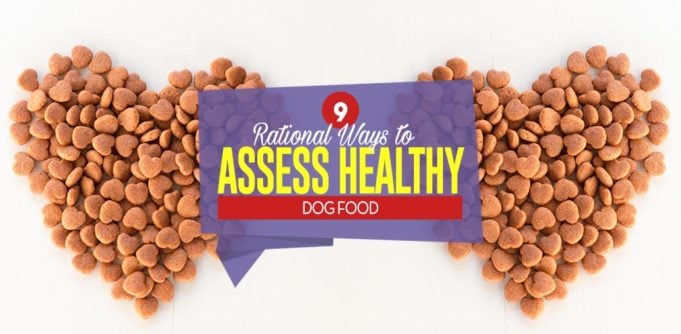You are what you eat. This saying is as true for dogs as it is for humans. The inclusion of healthy foods is essential to a dog’s diet. It should go without saying that dog owners only want the best for their canine companions, but many don’t really know how to evaluate the quality of the various dog foods in the market.
Identifying and then interpreting the key pieces of information on dog food packaging is important to making sure that is both safe and healthy to consume. Dog food manufacturers may have the ability to produce dog food, but the reality is that a dog’s dietary health is in the hands of its owner.
By carefully reviewing and understanding the various tidbits of information, their meaning and ramifications, the dog owner can ensure (with a certain degree of confidence) that they are doing right by their dogs and providing them with safe, healthy food. While there are several data points to be aware of, taking a systematic approach when examining the labels is a sure-fire way to assess healthy dog foods.
ALSO READ: 31 Dog Food and Feeding Myths You Need to Stop Believing
9 Rational Ways to Assess Healthy Dog Food
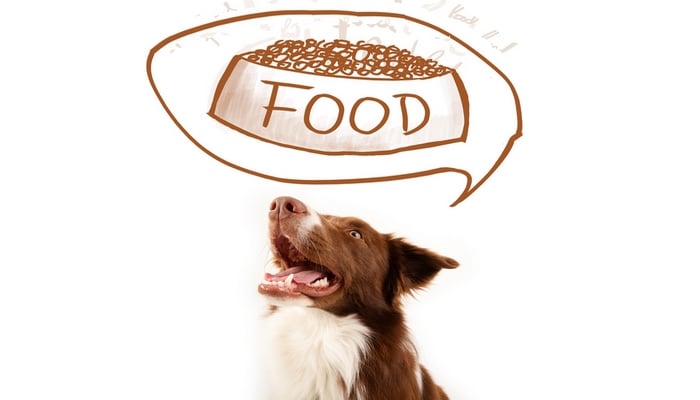 1. Understand what the label says
1. Understand what the label says
The first step in ensuring that you are choosing the best and healthiest foods for your pet is to understand what the label says. The Association of American Feed Control Officials (AAFCO) has guidelines on the label claims of pet food. Below are some common statements made on a label and their meanings:
1. If the label says the product contains only one ingredient, that product must contain at least 95% of that ingredient. For example, if a pet food says it is made solely of chicken, a minimum of 95% of that product must be chicken
2. The term “organic” on a label only refers to how the pet food was processed, but does not indicate the quality of the food.
3. The terms “veterinarian recommended” vs. “veterinarian formulated” are not the same thing. For a label to state “veterinarian recommended”, the product must conduct a statistically sound survey (in some cases, up to 300 vets) to prove that the majority of veterinarians approve of the product. However, products that state “veterinarian formulated” or “veterinary documented” only require 1 veterinarian to support the claim. Look for products that are “veterinarian recommended” instead of “veterinarian formulated.”
4. If a label states that it is “with” an ingredient (such as “with probiotics”), it is only required that the food contains 3% of that ingredient.
VIDEO GUIDE: How To Read Dog Food Labels Accurately
2. Read ingredients
The ingredients listed on your pet’s dog food must be listed in descending order by weight. There is the misconception that ingredients lower on the list are not important. However, because ingredients are listed by weight, those with a high level of moisture (e.g chicken) are typically listed at the top of the list, as water contributes a lot to the weight.
just because an ingredient is first on the list does not mean it contains the majority of the nutrition in the product, as most of it can contain water.
Ingredients lower on the list may contain key nutrients, but have the moisture removed. In general, the best pet foods are high in proteins and low in fillers. Protein is an important part of a dog’s diet because it provides the essential amino acids that dog’s need for its muscles and tissues.
For adult dogs, 18% of their diet should be protein. For puppies, protein should be 28% of the diet. Protein content is even higher for dogs that are highly active.
To ensure your dog is getting adequate protein, at least 2 meat sources, such as lamb, turkey, chicken, elk, salmon, or beef should show up within the first five ingredients on the label. Avoid products that contain animal fat on the label, as this term does not specify where the fat came from. In some cases, it may originate from dead, diseased, disabled, or dying animals.
3. Avoid additives and preservatives
Many pet foods contain additives and preservatives to keep it from spoiling. Be aware of the preservatives that are included on the label, as some may have some adverse side effects for your dog.
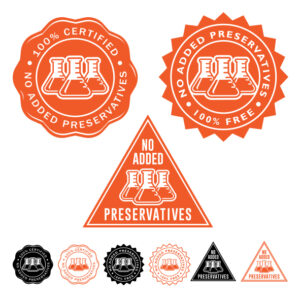 A common preservative used in pet food is ethoxyquin. Ethoxyquin is also a pesticide, may increase toxicity in dogs, decrease their physical activity, cause discolored urine, and pale gums.
A common preservative used in pet food is ethoxyquin. Ethoxyquin is also a pesticide, may increase toxicity in dogs, decrease their physical activity, cause discolored urine, and pale gums.
BHA (butylated hydroxyanisole) and BHT (butylated hydroxytoluene) are also common preservatives in pet food and are currently labeled by the World Health Organization and the State of California as carcinogens.
Another common preservative is propylene glycol. Propylene glycol in cat food is associated with a greater risk for Heinz body hemolytic anemia. Instead of using chemical preservatives, look for products that contain natural preservatives, such as Vitamin E (Tocopherol), Vitamin C or the herb rosemary.
4. Gluten and grains
Grains include corn, soy, rice, or what and should not be the first ingredient listed on the label. Grains are a source of carbohydrates for your dog, but in excess amounts, they are just filler in the dog food.
Some grains are difficult for dogs to digest, while others may cause inflammation or allergic reactions. Avoid choosing a pet food that contains grain byproducts, such as:
- white flour
- brewer’s rice
- bakery fines
- wheat middlings
Most of the nutrition from these by products are lost during processing.
RELATED: 4 Most Dangerous Ingredients In Dog Foods (According to Science)
5. Byproducts
Many pet foods contain the terms “animal byproducts”, ‘meat byproducts”, or “poultry byproducts”. According to the AAFCO, byproducts are defined as the non-rendered parts, other than meat, that is derived from slaughtered animals. This includes lungs, spleen, kidneys, liver, bone and skin.
Pet food companies use animal byproducts because they are cheaper compared to other meat products, not because they are more nutritious.
6. Rendered meat
“Rendered meat” is another common ingredient that should be avoided. Rendered meat contains random parts of an animal, which can be derived from dead, dying, diseased or disabled animals.
The best protein sources for your dog should be listed as lamb, turkey, chicken, elk, salmon, or beef, instead of rendered meat.
7. Meat meal/animal meal
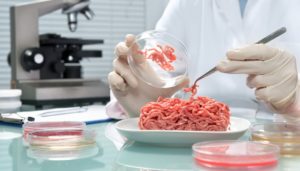 The word “meal” should be avoided. According to the AAFCO definition, meat meal is a “rendered product from mammal tissues, exclusive of any added blood, hair, hoof, horn, hide trimmings, manure, stomach and rumen contents except in such amounts as may occur unavoidably in good processing practices.”
The word “meal” should be avoided. According to the AAFCO definition, meat meal is a “rendered product from mammal tissues, exclusive of any added blood, hair, hoof, horn, hide trimmings, manure, stomach and rumen contents except in such amounts as may occur unavoidably in good processing practices.”
Unlike byproducts, it is not necessary to list the source of animals on the label. In fact, there is some evidence to suggest that euthanized animals in animal shelters and veterinarian clinics can be a source of rendered meat.
Generic meat can also originate from one of the following sources:
- road kill
- dead zoo animals
- dead on arrival poultry
- dead or diseased livestock
RECOMMENDED: 12 Facts About Dog Food Made in China
8. Dog Food's Guaranteed Analysis
It is a requirement that all pet food include the guaranteed analysis on the label. The guaranteed analysis states the minimum amount of crude protein and crude fat that is in the product.
For crude fiber and moisture, the guaranteed analysis states the maximum amount that is in the product. The guaranteed analysis is the pet food’s version of the Nutrition Facts. To ensure your dog is getting the appropriate nutrition, make sure that his dog food meets the following guaranteed analysis requirements:
- Puppies should have 28% protein and 17% fat
- Adult dogs should have 18% protein and 9-15% fat
- Performance dogs should have 25% protein and 20% fat
However, it should be noted that the listing of the guaranteed analysis amounts has no guarantee on the quality or digestibility of the pet food.
9. “Human grade ingredients
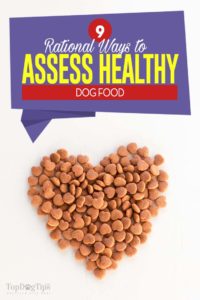 Be wary of the term “use of human grade ingredients”. Many marketers use this term to convince the consumer that these foods are healthier or better for your pet.
Be wary of the term “use of human grade ingredients”. Many marketers use this term to convince the consumer that these foods are healthier or better for your pet.
Currently, there is no legal definition for human-grade ingredients, and this term is used only for marketing purposes.
According to the AAFCO, there are very few pet food products that are considered to be officially human edible or human-grade. In fact, a product formulated for humans are likely to be nutritionally inadequate for pets and vice versa.
The only way to guarantee that a pet food is “human-grade” is to manufacture the product in a human food facility, which rarely happens. In general, ignore the marketing tagline. You can determine the quality of the pet food by reviewing the quality of the ingredients, rather than whether the food is listed as “human grade.”
READ NEXT: What Ingredients Should You Look For in Dog Food?


